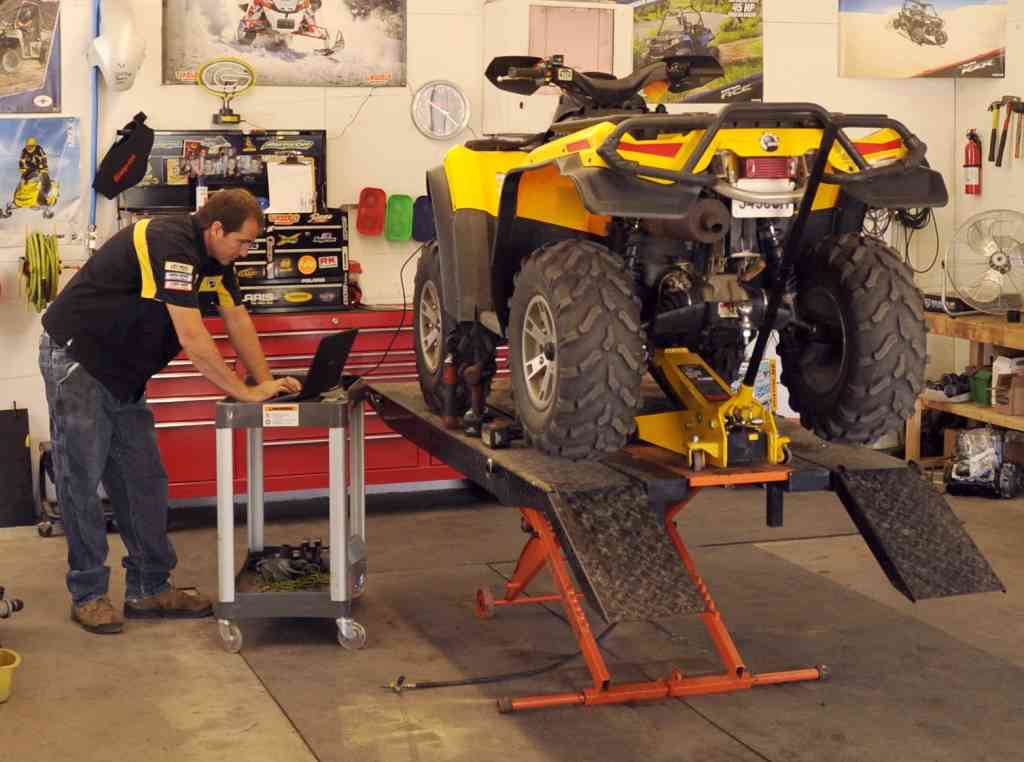ATV Mastery: A Comprehensive Guide to Off-Road Supremacy
ATV Mastery: A Comprehensive Guide to Off-Road Supremacy
Blog Article
ATV Riding Strategies: Grasping the Art of Off-Roading

Body Positioning
To successfully navigate via challenging off-road surface, it is important for ATV riders to continually preserve correct body placing. Keeping the proper body position while riding an ATV not only improves control and security but also ensures the motorcyclist's safety and security. By taking on the correct body positioning techniques, cyclists can effectively distribute their weight, enhance their balance, and minimize the danger of crashes or injuries.
One secret element of correct body placing is keeping the feet on the foot pegs. Placing the feet on the foot secures enables the cyclist to maintain stability and control over the ATV. The biker's knees need to be slightly bent, giving a mild suspension to absorb shocks and maintain balance. Furthermore, the biker's top body should remain loosened up and adaptable, permitting smooth and quick motions when needed. This consists of maintaining a light grasp on the handlebars to keep control without too much pressure.
Moreover, the biker's eyes should always be focused in advance, scanning the surface and preparing for any type of obstacles or changes in the route. By preserving an ahead gaze, riders can make instant choices and react appropriately to challenging terrain.
Throttle Control
Building upon the significance of proper body placing for ATV cyclists, understanding throttle control is an essential skill that allows riders to properly steer through various off-road terrains. Throttle control describes the capability to regulate the quantity of power delivered to the ATV's engine. By recognizing how to adjust the throttle, cyclists can make sure a regulated and smooth acceleration, enabling them to browse challenges with accuracy.
Sudden or jerky movements can cause the ATV to shed traction or become unsteady, making it tough to preserve control. This technique enables the ATV to maintain a stable rate and gives much better grip, minimizing the risk of mishaps.
In addition to smooth inflection, motorcyclists should also find out exactly how to balance the throttle with other riding techniques, such as body positioning and braking. For instance, when climbing up high hillsides, cyclists need to apply sufficient throttle to preserve energy without subduing the ATV or causing wheel spin. Similarly, when descending high inclines, motorcyclists need to make use of the throttle in mix with appropriate body placing and stopping to maintain control and prevent the ATV from sliding or tipping over.

Braking Techniques
A vital aspect of ATV riding strategies is grasping reliable braking strategies. It is crucial to keep in mind that severe braking with just the front brake can cause the ATV to pitch ahead, potentially leading to loss of control or also turning over. By mastering these braking strategies, you can improve your ATV riding skills and ensure a pleasurable and safe off-roading experience.
Cornering Techniques
One vital facet of grasping ATV riding methods is understanding reliable cornering methods. Catching on an ATV can be tough, yet with the ideal techniques, bikers can browse turns securely and successfully. The trick to effective cornering is to keep control Visit This Link of the ATV while making the most of grip and reducing the risk of tipping over.
To carry out a correct cornering method, riders ought to approach the turn at a suitable speed, guaranteeing they are not going too slow-moving or as well fast. It is critical to move the body weight in the direction of the inside of the turn, leaning right into it to maintain equilibrium and stability. This assists to counterbalance the centrifugal force and maintains the ATV upright.
In addition, riders ought to maintain their eyes concentrated on the leave point of the turn instead of the instant course in advance (ATV). This permits smoother and more precise steering, as it assists the cyclist anticipate any challenges or modifications in surface
In addition, appropriate throttle control plays a considerable role in cornering. Bikers should modulate the throttle smoothly, avoiding sudden accelerations or slowdowns, which can cause loss of control.
Uphill and Downhill Riding
When navigating off-road surface, ATV riders have to grasp the strategies for uphill and downhill riding to maintain control and make sure safety. Downhill riding, on the various other hand, requires cyclists to lean back and shift their weight in the direction of the rear of the ATV. By understanding the techniques for uphill and downhill riding, ATV bikers can confidently take on various off-road surfaces and appreciate a thrilling and secure journey.
Verdict
In conclusion, mastering the art of ATV riding needs a combination of body positioning, throttle control, stopping strategies, and reliable cornering. Uphill and downhill riding visit additionally require particular skills to navigate securely. By applying these strategies, riders can enhance their off-roading experience and improve their general control and safety and security on the ATV.
ATV Riding Techniques: Grasping the Art of Off-Roading is a comprehensive guide that dives into the complexities of grasping the skills required for off-road ATV riding. Whether you are a newbie or an experienced motorcyclist, ATV Riding Techniques: Understanding the Art of Off-Roading click to find out more supplies vital suggestions to assist elevate your off-road ATV riding skills to the next degree.

Report this page